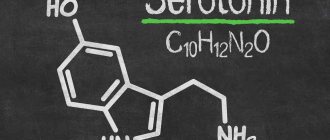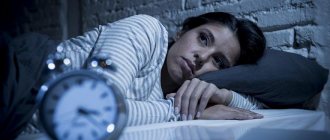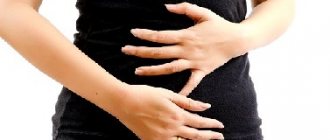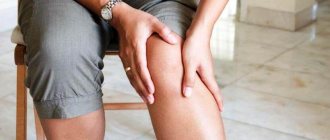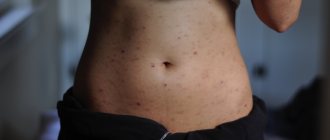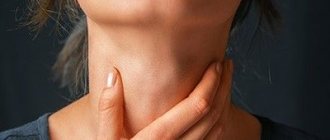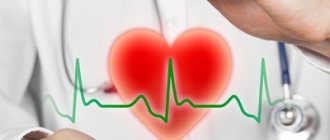An osteopathic doctor is a representative of the new medical specialty “osteopathy” for Russia, with a wide range of competencies. Osteopathic effects can help with various pathological conditions from muscle pain to dysfunction of internal organs.
Age is not a limitation to treatment. An osteopath can provide treatment to both infants and elderly people. The main tool of a doctor is his sensitive hands, the sensitivity of which he develops over many years of practical activity.
Scrupulous knowledge of anatomy and fine sensitivity of the hands are the basis for the effective influence of an osteopath. But this is still not enough! The art lies in the skillful application of techniques for correcting identified body dysfunctions during the healing session.
The human body is a single whole. The osteopath turns his influence to the WHOLE, HEALING a person. Representatives of this medical specialty consider the basis of any disease to be a violation of the body's regulatory mechanisms. To heal, it is necessary to find the “weak link” and restore the lost balance.
An area of pain or discomfort is not always the root cause of imbalance. Illness is the last straw that overflows the body’s patience, a failure of adaptation when the body loses the ability to function normally. An osteopath “unwinds” the tangle of dysfunctions, looks for the cause that led to the disease and acts on it.
What is osteopathy?
There are many competing definitions of osteopathy, formulated in the 19th-21st centuries. Everyone put a special meaning into the definition and was right in their own way. Osteopathy is so multifaceted that it is very difficult to define its essence “in a nutshell”.
You could say that osteopathy is philosophy at your fingertips. Philosophy - because when immersed in osteopathic practice, the doctor’s worldview changes, as he begins to consider the processes occurring in the body holistically, without highlighting the pathology of a particular organ or narrow anatomical area.
At the tips of the fingers - this is a figurative, but at the same time, a very specific expression, since the theory of osteopathic treatment is confirmed empirically when working with a patient. An osteopath's hand is a delicate organ that perceives the physical properties of tissue.
By touching the patient’s body, it is possible to identify areas where the mobility of the structures of the musculoskeletal system, soft tissues and internal organs is impaired, and to understand the history of the formation of dysfunction. Working with the body, the osteopath unwinds the tangle of interconnected functional disorders, creating favorable conditions for restoring freedom of movement, which is necessary for regaining lost health.
DIFFERENCE IN TREATMENT METHODS
The differences between the methods of osteopathy and manual therapy are due to the difference in the perception of the human body. Osteopaths consider the patient as a whole and correct his general condition. They can restore the functions of internal organs. The manuals concentrate on the spine.
There are several more fundamental differences:
1. After examining the patient, osteopaths may prescribe tests and some additional diagnostic procedures. Chiropractors begin work after reviewing MRI, X-ray, urine and blood tests.
2. Manual therapy involves correction of the spine in order to normalize the transmission of nerve impulses and release compressed nerve fibers. Osteopathy has a lot of therapeutic techniques to activate the internal forces of the body.
3. Osteopathy eliminates the causes of the disease. Manual therapy relieves symptoms - the consequences of the disease.
4. Osteopathy uses soft, delicate influences for relaxation, restoration of blood circulation, movement of lymph, and cerebrospinal fluid. Manual therapy uses stretching, reduction, and pressing. All manipulations are aimed at joints, spine, bones.
5. Manual therapy sessions do not last long because the effect on the spine occurs. Osteopaths work with patients for quite a long time. Throughout the entire procedure, there is a more voluminous, broader effect on the body.
6. Relapse after a course of osteopathic treatment is unlikely, since the cause of the disease is eliminated. Manual sessions only eliminate symptoms. The disease has a high probability of appearing again.
Who is an osteopath?
To become a certified osteopath in Russia, you need to go through a long professional path. The first stage is a medical university - 6 years of study with a specialty in general medicine. But this is not enough to work as a doctor. Further training in internship or residency is required to obtain a specialization that allows you to engage in practical medical practice. This stage takes 1-2 years.
Only after completing primary specialization in one of the classical clinical disciplines is it possible to master a new specialty - osteopathy. The third stage, which includes the actual training in osteopathy, takes 4 years and ends with the defense of a diploma. Thus, the path from a first-year medical student to a certified osteopathic specialist is 11-12 years.
But this is not the end of learning. An osteopath constantly improves his skills through continuous postgraduate education and participation in international seminars. In our country, an osteopath is, first of all, an experienced doctor with a wide range of clinical knowledge and practical skills, and a wealth of techniques for correcting dysfunctions of the spine, joints of the extremities, soft tissues, and internal organs.
Why is an osteopathic doctor such a rare specialty?
Since the specialty of osteopathic doctor is officially approved by the Ministry of Health, such doctors must work in all medical institutions. But so far there are not enough of them in Russia. Now that specialties for training osteopathic doctors will begin to work in medical universities, their number should increase rapidly. And many, many patients will be able to verify the effectiveness of this treatment method.
This is a very young specialty for our country. Viola Fryman (at that time the last of the students of the founder of this discipline, Andrew Taylor Still was the first to tell Russian doctors about osteopathy . She was a leading osteopath in the world, and her first public lecture took place in 1988 at the Leningrad Research Institute of Orthopedics and Traumatology. Turner. Hundreds of doctors attended. When Dr. Fryman showed the method on a girl, many were surprised: during the treatment, she simply laid her hands on the girl, whose radius bone was underdeveloped, and it seemed to the audience that she did nothing else. But when six months later they found out that the girl’s bone had fully formed, they were shocked. By the way, surgeons from the Turner Institute prepared her for surgery and did not consider other treatment options at that moment.
Link to publication: aif.ru
What does an osteopath treat in adults?
If you have been given one of the common diagnoses - osteochondrosis, vegetative dystonia, dyscirculatory encephalopathy - an osteopath will help you understand the problem.
Other common reasons for visiting an osteopath are:
- headache;
- facial pain and dysfunction of the temporomandibular joint;
- neck and back pain;
- muscle pain of various localizations;
- consequences of operations on the spine, chest organs, abdominal cavity, pelvis;
- functional digestive disorders (irritable bowel syndrome, biliary dyskinesia, gastroesophageal reflux);
- pelvic dysfunction (oblique pelvis, twisted pelvis, functional block of the sacroiliac joint).
What do osteopaths do?
An osteopath restores the mobility of tissues and organs that can move and contract. In this way, it normalizes the biomechanics of the body.
This type of treatment is based on the comprehensive healing of the whole body. The range of diseases, the causes of which are eliminated by an osteopath, is quite wide:
- osteochondrosis, hernia or protrusion of the spine;
- chronic fatigue, neuroses or sleep disorders;
- headaches, including consequences of injuries;
- chronic joint diseases;
- weather dependence.
What does an osteopath treat in children?
Children can be taken to an osteopath from the first days of life. The doctor will help relieve the child’s body of stress and microtrauma during childbirth, and eliminate sprains and twisting.
Problems in children with whom an osteopath works:
- consequences of birth injuries;
- developmental delay;
- sleep disorders;
- frequent colds;
- autism;
- behavioral deviations;
- stuttering;
- enuresis;
- posture disorders.
“Male” and “female” diseases
An osteopath treats diseases of the male and female genital organs, restoring their functions - reproductive, menstrual (in women) and sexual.
Among the ailments that an osteopath treats:
- painful menstruation and cycle irregularities;
- infertility;
- impotence;
- chronic inflammation of the genital organs;
- ovarian cysts;
- prostate adenoma.
Types of osteopathy
Globally, osteopathy is divided into three sections: structural, visceral and cranial. The division is based on what body structures the doctor corrects when performing manipulations.
Structural osteopathy
Manipulations aimed at correcting the condition of the structures of the musculoskeletal system (spine, pelvis, joints and muscles of the trunk, upper and lower extremities) are traditionally combined into structural osteopathy.
Visceral osteopathy
Correction of the position and maintenance of mobility of internal organs is carried out using visceral techniques (from the Latin viscera - insides). An osteopath works indirectly with the pelvic organs, abdominal cavity, and chest. The manipulations are carried out gently and painlessly.
Cranial osteopathy
Cranial osteopathy should be discussed in more detail. Cranial (from Latin cranium - skull) means related to the skull. The term craniosacral osteopathy is often used (from the Latin sacrum - sacrum). There is nothing sacred or occult here, the term simply shows the functional and anatomical connections between the skull and sacrum through the dura mater.
The dura mater can be compared to a stocking stretched over the brain, passing over the spinal cord and fixed in the area of the foramen magnum, the first cervical vertebrae and the sacrum. This is a very important structure, the condition of which determines the mobility of the spine and the general condition of a person.
There are many rhythms in our body, respiratory and heart rhythms are well known. Another rhythm is craniosacral. According to one theory, it occurs due to contractions of the walls of the third ventricle of the brain at the time of secretion of cerebrospinal fluid and spreads through the dura mater to all structures of the body.
The osteopath, placing his hands on the occipital bone and sacrum, assesses the parameters of the craniosacral rhythm, areas of additional fixation of the dura mater and those regions of the body where there are restrictions on the spread of the rhythm.
This is one of the methods of osteopathic diagnosis. The amplitude of tissue movement under the hands of an osteopath is calculated in micrometers. The ability of humans to sense such small fluctuations is a matter of heated debate.
However, today there are fundamental studies that prove not only the presence of craniosacral rhythm, but also the possibility of perceiving its main characteristics by the hands of an osteopath.
Thus, cranial (or craniosacral) osteopathy is the expert’s jewelry work, based on deep knowledge of anatomy and developed sensitivity of the hands, and the dura mater is a conductor of craniosacral rhythm and an indicator of the functional state of the body.
Who can see an osteopath?
The door of an osteopathic doctor is open to everyone. Consultation can be provided to both adult patients suffering from chronic diseases, as well as newborns, children of any age and pregnant women.
Children Long-term studies and observations of osteopaths have shown that 85% of babies receive a birth injury (upper spine, skull, sacrum), sometimes minor. But with age, it begins to sound more and more in the body. And if the child was born by cesarean section, he is most susceptible to a sharp drop in intracranial pressure immediately after removal from the uterine cavity. Therefore, it is very important for newborns to identify possible pathologies and microtraumas invisible to the naked eye at an early stage of development.
An older child should be seen by a doctor if he:
- has difficulty adapting to a new life and communicating with peers;
- gets sick often; — depressed, little interested in the world around him; - overly excitable; - sleeps poorly; - does not remember new information well, is constantly absent-minded; - speaks indistinctly and chaotically; - constantly slouches; - suffers from nervous tics; - headaches; - problems with assimilation and digestion of food.
The earlier a problem is detected, the easier it is to treat it and thereby improve the quality of future life of the little patient.
Pregnant women Starting from the first weeks of pregnancy, the work of the entire female body begins to adapt to the growing uterus. Physiological changes are predetermined by nature and occur naturally: the hormonal background is gradually changing, the uterus is in the stage of active growth, increasing in size it causes its ligaments to stretch, displaces the intestines, supports the liver and the abdominal diaphragm.
The body begins to create favorable conditions for the growth and development of the unborn baby. All organs adapt to the uterus. Also, the female body needs to adapt to weight gain (normally it is 8-12 kg, but often this figure is much higher).
Very often, pregnant women complain of pain in the back, pelvic area, legs, a feeling of heaviness in the stomach, experience heartburn and belching, and suffer from edema. But not only internal changes occur in the female body, but also external ones: the curves of the spine increase (the lumbar and cervical ones go forward, the thoracic ones go back), the sacrum bends forward, following the growth of the uterus. The muscles of the back and back of the legs strengthen and become more static to keep the body from falling forward with the growing uterus. Don't be afraid to ask your doctor for help. An osteopath can help relieve associated unpleasant symptoms and significantly facilitate future childbirth. There are many methods and techniques that help adapt the body to pregnancy and significantly improve the quality of life of the expectant mother. The help of an osteopath is absolutely safe for both mother and fetus. It is not for nothing that a visit to an office with a sign “osteopathic doctor” is included in the pregnancy support protocol in the USA and Europe. Indications for treatment in the first trimester: 1. toxicosis - vomiting of pregnant women more than 2 times a day; 2. constipation; 3. abdominal pain; 4. pain of various localizations, including headaches. In the second trimester: 1. pain of any localization; 2. numbness of fingers, carpal tunnel syndrome; 3. changes in uterine blood flow indicators according to ultrasound data; 4. pain in the groin area; 5. instability of blood pressure; 6. swelling of the lower extremities. In the third trimester, you should visit a doctor when you have: 1. symphysitis - pain in the symphysis pubis; 2. incorrect position of the fetus - transverse or pelvic presentation.
It is worth noting that osteopaths do not turn the fetus.
Their prerogative: returning harmony to the uterus and pelvis and creating favorable conditions for the child to independently take the correct position in the uterus. Typically, in 60-70% of cases, reversal occurs within 72 hours of administration. 3. preparing the pelvis for childbirth. How often should you visit an osteopath during pregnancy? As a rule, one visit to the doctor per month is sufficient during the entire gestation period.
Adults
Older and older people are most susceptible to chronic diseases. As a generally accepted method of treatment, osteopathy began to develop not so long ago. This means that patients with pain that has plagued them for many years simply could not be diagnosed at that time. Indications for an osteopath: - pain in various locations (neck, back, lower back, joints, intercostal pain); - frequent dizziness; - headache; — chronic colds, allergies, etc.; - problems with conception and pregnancy; — gynecological and urological diseases; - diseases of the gastrointestinal tract (gastroesophageal reflux, colitis, constipation) - chronic pelvic pain; — arterial hypertension, vegetative-vascular dystonia; — chronic diseases of the ENT organs (rhinitis, sinusitis, otitis); — recovery after surgery; — recovery after fractures and osteosynthesis; — depressive states, chronic fatigue, stress; - excessive sports activities.
What is the difference between an osteopath and a chiropractor?
An osteopath differs from a chiropractor in his worldview. For a chiropractor, the human body is a mechanism consisting of many gears. If one of the parts stops working, then it needs to be set and returned to its place.
This mechanistic approach sometimes pays off, especially if a person, having made a sudden or awkward movement, feels acute pain. In this case, the cause of pain is a functional block of the joint of the spine or the joint of the sacrum and pelvis (the so-called sacroiliac joint), when movement in the joints of the musculoskeletal structures becomes sharply limited.
The chiropractor, having performed the mobilization technique, returns mobility to the joint and effectively copes with pain. However, in most cases, the situation is much more complicated.
An osteopath, unlike a chiropractor, is interested in the reason for the formation of a functional block. It is important for him to find out which weak link in the body led to pain and limitation of movement. After all, in ordinary life we make many complex and not always familiar movements, but we do not always experience pain.
It's all about the adaptation of our body to the motor tasks that life sets for us. If the musculoskeletal system functions optimally, then there are no conditions for the formation of pain and limitation of movements in the joints.
Our body stores many dysfunctions: the consequences of surgical interventions, injuries, emotional problems, “packed” into spasming muscles, but we do not notice this while the body has compensatory reserves.
As a rule, the appearance of pain means a breakdown of adaptation mechanisms, a cry from our body for help. If we suppress pain with medications or use the services of a chiropractor, this will not be a global solution to the problem.
For effective treatment, it is necessary to find out the reason why the body could not cope with the load. It is the osteopath who is able to conduct an “investigation” and determine the cause of the failure of adaptation and the appearance of pain. An osteopath works on the cause, not the effect.
Osteopathic techniques
Myofascial release techniques relieve tension from muscles, ligaments and fascial sheaths. The osteopath uses pressure, stretching and twisting to relieve spasm: pain and swelling go away.
Muscle-energetic techniques involve the influence of both the osteopath and the patient himself. The specialist fixes the vertebra or other bone and helps the patient flex and straighten muscle groups.
General articulation techniques help relieve restrictions in joint movement and restore the correct alignment of bones. Outwardly, this resembles physical therapy, but the effect of such techniques is greater. When performed correctly, thanks to articulation, even gross displacements of the vertebrae and bones can be eliminated.
Contraindications to osteopathic treatment
As with any therapeutic effect, there are diseases and conditions in which osteopathic manipulation is contraindicated.
- Malignant neoplasms. Any osteopathic effect in this case could potentially provoke further spread of the tumor.
- Fractures. In this case, osteopathic effects on tissue can be carried out after adequate comparison of bone fragments and immobilization of a limb or body segment.
- Fever (increased body temperature above 38 degrees Celsius). Until the cause of the fever is determined, osteopathic treatment is not indicated.
- Mental illnesses. Conditions when a patient, due to a psychiatric illness, can be dangerous to himself and others. In this case, first of all, the help of a psychiatrist is required.
- Active reluctance of the patient to undergo osteopathic treatment. If an adult patient is brought to an appointment with an osteopath by relatives and insists on osteopathic correction, and the patient is extremely negative, then there is no point in carrying out the procedure. A person must take a conscious approach to his health, so the decision to carry out treatment must come from him.
Contraindications
In some diseases, osteopathy is contraindicated. This:
- acute infectious diseases;
- bleeding;
- malignant neoplasms;
- severe blood diseases;
- exacerbation of rheumatic diseases;
- acute thrombosis of arteries and veins;
- heart or pulmonary failure;
- acute myocardial infarction;
- stroke;
- acute inflammation of the joints, spine, brain and spinal cord;
- purulent processes;
- aortic aneurysm;
- hypertensive crisis;
- mental illness with excessive agitation;
- spasmophilia;
- osteoporosis.
How does an osteopath work?
Unlike physiotherapy, where a course of 10-15 daily procedures is required to achieve a lasting therapeutic effect, osteopathic treatment is carried out no more than once a week, and the course can consist of 3-4 procedures. As a rule, an acute situation within the competence of an osteopath can be dealt with in several sessions.
The osteopath explains the features of the motor regime and gives a set of home exercises to consolidate the effect of its influence. In the case of a chronic disease, osteopathy sessions can be carried out once a month for a long period.
There are no uniform recommendations for the duration of treatment and the frequency of sessions, since the medical history and life history of each person are individual. The osteopath has more than 2,500 techniques and many years of clinical experience, which allows him to provide effective assistance and determine the course of treatment depending on the complexity of the problem and the patient’s adaptive reserves.
Types of osteopathy
There are several key areas of osteopathy that differ from each other in the type of treatment of certain pathologies:
- Structural . Solves problems in the functioning of muscle and bone tissue. Its scope includes the treatment of osteochondrosis, scoliosis and other abnormalities.
- Visceral . Concentrates on correcting pathologies of the respiratory system, gastrointestinal tract and genitourinary organs. The techniques help fight hypertension, enuresis, and so on.
- Craniosacral . The objectives of the direction include the treatment and prevention of diseases of the central nervous system. Osteopathic techniques help reduce pressure in the skull and get rid of frequent headaches or dizziness.
Thanks to their skills, osteopaths have a good feel for the tissues with which they will interact. This allows you to correctly select a specific type of osteopathy to start self-healing of the patient’s body.
Preparing for treatment or what to take with you to an appointment with an osteopath?
Medical documentation. Examinations of other specialists, results of laboratory and instrumental research methods. If you have had an X-ray, computed tomography or magnetic resonance imaging scan, it is advisable to take with you not only the specialist’s report, but also the images themselves: on film or CD.
Of course, an osteopath carries out specific diagnostics of existing dysfunctions, but is not a psychic who can feel with his hands any even slightest deviation from the norm. Therefore, data from additional research methods can be useful in diagnosis and determining the tactics of osteopathic treatment.
- Comfortable underwear. You should be prepared to remove your outer clothing during the session, even if you have a headache or foot pain. The osteopath evaluates the entire body globally in order to determine the leading dysfunction that requires correction.
- Orthopedic insoles, orthodontic mouth guards. If you use orthopedic insoles, heel pads, other orthoses, or orthodontic mouthguards, BE SURE to take them with you to your doctor’s appointment. The osteopath will need them to conduct specific tests and determine the adequacy of the orthosis.
What does an osteopathic doctor do for adults during an appointment?
At the first appointment, the osteopath examines the patient’s complaints and collects an anamnesis of the disease. After this, tests are carried out to determine the elasticity of the muscles and joints of the body. Based on the data obtained, the doctor determines an individual direction of treatment, which takes into account lifestyle, age, site of the disease and concomitant manifestations of the disease.
Osteopathic treatment has a number of contraindications that must be excluded during the initial consultation with an osteopath.
Despite the fact that at the appointment the specialist performs manual tests and assesses the patient’s condition using palpation, additional information will facilitate the process of assessing the prescribed treatment. Therefore, it will be useful to collect in advance all available results from previous examinations. These include laboratory tests, CT, ultrasound, MRI, X-rays and so on.
Is the osteopath a charlatan or a doctor?
Modern medicine, trying to prove the effectiveness and safety of any effect, from pharmacological to psychological, and osteopathy speak different languages, so it is difficult for them to understand each other.
Imagine if we were comparing meters and seconds. Can you say that 5 meters is more than 4 seconds? Of course, this seems absurd. The same difficulties are faced by an expert trying to compare the effectiveness of an anesthetic drug and an osteopathic procedure.
The drug works at the biochemical micro level, and the osteopath at the organismal macro level. The medicine acts on receptors, suppressing or activating certain metabolic or neurotransmitter systems. The osteopath returns mobility to the body, exerting a local and global effect not only on the musculoskeletal system, but also indirectly on the neuroendocrine regulation of the body’s activities.
We can simply say that the medicine has an “internal” effect, and the osteopath has an “external” effect. Evidence-based medicine can assess impact if conditions are standardized.
To a certain extent, this is possible in the case of drug therapy (you can control the dose, frequency of administration, concentration of the drug in the blood), hardware methods of influence (standard stimulation parameters adjusted using the device scale), but it is completely impossible in relation to osteopathy.
The osteopath's hands and clinical experience are his main tools, the impact of which is difficult to measure objectively using currently available methods. The main criterion for a doctor’s effectiveness can be formulated in three words: “the patient feels better.”
But such an unscientific formulation does not suit the medical community. We need numbers, scales, and reliability. Modern osteopathy is trying to “prove” its right to be considered evidence-based; it wants to learn to speak an impartial mathematical language.
Whether this should be done is a big question. After all, a person cannot be squeezed into the framework of formulas and rigid standards. For drug therapy and instrumental methods of influence, evidence-based medicine is necessary. For osteopathy, the principles of evidence do not work, so you should not compare meters and seconds.
Osteopathy - what it is, what it treats and how it helps
Osteopathy is a unique technique of complex work with the human body to restore health. Its founder, Dr. Andrew Still, formulated the main postulates of a new direction in medicine:
- functional systems of the body are interconnected;
- external influence on the body leads to disruption of the functioning of the bone apparatus - the support from the supports of all internal organs and systems. The result is illness.
«If all parts of the body are correctly oriented, we can boast of excellent health. If not, this leads to the development of the disease. If parts of the body are returned to the correct orientation, the disease will recede
».
(E.T. Still).
What does osteopathy treat?
An osteopathic doctor can correct chronic spinal injuries (osteochondrosis, post-traumatic displacement of the vertebrae, radiculitis, cervical and thoracic intercostal syndromes and other disorders) using soft myofascial treatment techniques, allowing one to work with acute pain.
Osteopathic therapy helps with mild to moderate functional disorders of organs:
- chest cavity (diseases of the lungs, bronchi, heart), consequences of pneumonia, bronchitis, pleurisy.
- abdominal cavity (liver, gall bladder, stomach, pancreas, intestines, kidneys);
- pelvic cavity (bladder, uterus, appendages, prostate), including those associated with impaired innervation and functioning of the autonomic nervous system.
Significant improvement is possible with post-traumatic disorders, the condition of organs after an infectious disease, gynecological disorders (inflammation of the appendages, displacement of the uterus, consequences of termination of pregnancy).
Osteopathy allows you to find primary disorders (injuries, muscle spasms) in the patient’s body - the original damage that served as the root cause of pathological changes. It is they, often without clearly manifesting themselves in the human body, that become the causes of pain in the back, limbs, head, and cause disorders in the functioning of organs and systems.
Difference between osteopathy and manual therapy
Confusion arises due to the fact that osteopathy, like manual therapy, uses manual influences on the human body and does not require medication. Now the paths of these two methods have diverged, and they have become independent areas of medicine.
The main difference is in the approach - if a chiropractor finds a problem in the spine (for example, displacement of the vertebrae) and removes it (settling the vertebrae into place), then the osteopath looks for the cause of the displacement of the patient’s vertebrae. After all, if the cause is not removed, the same problem will return again and again.
The work technique of an osteopath and a chiropractor also differs. It is noted that the osteopath works with soft, delicate, painless influences. Hence the wider range of problems that an osteopath works on than a chiropractor: from pregnancy and children in the first year of life to the elderly.
A chiropractor has a much smaller number of therapeutic techniques - reduction, stretching, pressing, twisting - only about 100 techniques, osteopathic effects are provided by 3500 different methods. It is no coincidence that training to become a doctor of osteopathy lasts several times longer than to become a chiropractor.
Advantages of osteopathy over manual therapy
The main advantages of osteopathy over manual therapy are its high effectiveness and work with the causes of the disease, which ensures long-term preservation of treatment results.
Treatment of a wide range of diseases and syndromes, comprehensive health improvement, gentle painless effect on the body, allowing the use of osteopathy in patients of different ages and conditions, minimal likelihood of relapse of the disease due to the elimination of the cause of the disease.
What is important is that osteopathic therapy involves a small number of procedures with a fairly large (7-10 days) time interval; in the intervals between appointments, the healing process, “triggered” by the osteopath, has a long-lasting effect and continues spontaneously.
What does an osteopathic doctor treat?
In adults
Have you become hostage to constant malaise, regular pain of unknown origin, chronic fatigue syndrome? Osteopathy is not a panacea, and an osteopathic doctor is not a magician. But if the therapist has driven you to all the offices, and the cause of your complaints has not been established, it’s time to contact our clinic.
In children
Osteopathy is one of the most gentle and delicate types of treatment for typical childhood diseases. Has your child been diagnosed with hyperexcitability, delayed psychomotor development, minimal brain dysfunction or hip dysplasia? Do you have uncorrected shoulder dislocations or subluxations of the cervical vertebrae due to birth trauma? Does he sleep poorly or cannot maintain his posture?
When medications are useless and manual therapy is unacceptable due to the patient’s age, an osteopath will painlessly and gently find the problem and alleviate the baby’s condition, taking into account his individual characteristics of physiological and mental development.
In newborns
What a pity, but sometimes babies in the first months are often distracted from getting to know the world by various troubles. Something went wrong during intrauterine development or childbirth caused difficulties - and now the baby cries a lot, especially when he is placed on his back, does not want to take the breast, is restless and sleeps little... These are important symptoms with which you should contact an osteopath. He will also reassure any mother who is worried about how her child is developing, even if everything is fine - he will diagnose the general condition of the spine, assess the tone and symmetry of the limbs, their mobility and possible deformities.
In pregnant women
Pregnancy can become a serious test for the health of the expectant mother if you do not pay due attention to the increasing loads on the spine, pelvic bones, blood circulation and endocrine system from trimester to trimester.
An osteopath not only relieves the unpleasant symptoms of toxicosis, swelling in the legs, pain in the back, joints, sacrum and coccyx, prepares soft tissues to avoid ruptures, but also generally helps restore the mobility of the pelvic bones, which contributes to the successful passage of the child through birth without injury ways.
Indications for the use of osteopathy
The list of complaints that an osteopath encounters in his practice is quite extensive. If you experience one or more of the following symptoms, you should consult a specialist:
- recent or old injury that regularly “makes itself felt”, limiting movements and the general functioning of the body;
- frequent dizziness, headaches and migraines;
- general fatigue, decreased performance, concentration, memory impairment.
- Often, when a patient visits an osteopath with one complaint after diagnosis, he learns about a number of interrelated problems in the functioning of his own body. This is due to the fact that an osteopath does not study one individual organ, but carefully considers the body as a system.
The main diseases and pathologies that osteopaths deal with include:
- diseases of the musculoskeletal system (associated with displacement of bone structures, including post-traumatic, changes in the spinal column, nervous system - arthritis, arthrosis, scoliosis, osteochondrosis, etc.);
- diseases of internal organs (displacement, inflammatory processes - cholecystitis, pancreatitis, diseases of the abdominal organs);
- diseases of reproductive function in women (infertility, cycle disorders, hormonal imbalance, consequences of childbirth);
- diseases of the genitourinary system in men (prostate diseases, infertility, erectile dysfunction);
- childhood dysfunctions and pathologies;
- neurological diseases (neuralgia, headaches, muscle spasms, tightness and tension);
- respiratory diseases (chronic forms of asthma, bronchitis, acute respiratory diseases);
- diseases of the ear, nose, throat and border zones (otitis and sinusitis);
- diseases of the lymphatic system (lymphstasis).
First appointment with an osteopath: advice to patients
It is better to choose clothes and underwear that are suitable for this occasion and comfortable. Since at the first appointment the osteopath needs to examine the whole body, women can wear an open swimsuit, and men can wear swimming trunks. Such clothing makes it possible to work with correction points in various areas of the body. If you forget or don’t have time to take a swimsuit with you, then for the first time the examination can be carried out in underwear. It is advisable to take a shower on the day of your appointment.
You need to eat an hour and a half before going to the doctor, preferably not too much. There should be no severe hunger that distracts the patient during the session. But a stomach that is too full can interfere with performing manipulations in the abdominal area.
The patient must describe his health problems to the doctor as accurately as possible, so you need to prepare a list of complaints in advance: remember all the symptoms, frequency, strength and location of pain, etc. In this case, it will be easier for the specialist to diagnose, make a diagnosis and begin treatment.
When visiting an osteopath, you must take all documents and certificates regarding this disease. These include: medical card, test results, extracts, ultrasound data, etc.
To go to the doctor you need to free up a few hours. The specialist needs to study the patient’s condition in detail in order for the result of therapy to be more successful.
How to avoid scammers
Quackery and fraud in osteopathy are a common occurrence, as in any new direction that is gaining popularity. The fashionable term was picked up by people very far from osteopathic treatment. Nowadays, a rare massage therapist will not fail to announce that he uses “osteopathic techniques”; this phrase often appears in the resumes of beauty salon masters. Unless manicures and pedicures are done using cosmetic osteopathy.
A huge number of “quick-cook” osteopaths gave rise to seminars by osteopaths from France, held in Russian cities, after which certificates were given for advanced training courses in osteopathy. These courses undoubtedly gave me an understanding of the science of osteopathy, but not the necessary practical skills. There is a standard time frame for obtaining the education of an osteopathic doctor - at least four years. Every year of study there are new sections on the application of practical skills and techniques. There is an international exam - it is taken in Prague, after which a document is issued confirming the qualification of Doctor of Osteopathy.
It is quite possible to find out this information about the doctor before your appointment. There are “specialists” who have not completed the full course of training, but are already practicing osteopathic techniques. The best ways to avoid making a mistake in choosing “your” osteopathic doctor are the level of the osteopathic clinic and “word of mouth”, through which information about the specialist’s qualifications spreads quite quickly; it is no coincidence that such doctors often become “family” doctors, accompanying their patients for a long time time.
Methods and types of osteopathy
Structural
Covers diseases of the musculoskeletal system:
- pain in joints, muscles, radiculitis, osteochondrosis, scoliosis and other curvatures of the spine, disc hernias, back and lower back pain;
- various joint diseases caused by malnutrition;
- treatment of the consequences of birth injuries in children from the first year of life;
- alternative treatment for heel spurs and other foot defects, “bunions” on the legs;
- treatment of arthritis, arthrosis of varying severity;
- treatment of the consequences of injuries, fractures, dislocations, sprains - including in athletes;
- senile stoop.
Visceral
Treats internal organ systems:
- breathing, blood circulation, including fluctuations in blood pressure;
- prevention of heart attacks, tachycardia, hypertension;
- digestive system - disorders of the gastrointestinal tract, constipation, gastritis, obesity;
- genitourinary system - kidney disease, urinary incontinence, gynecological problems, infertility, decreased potency, prostatitis.
Craniosacral
Treatment of neurological diseases:
- consequences of strokes;
- consequences of traumatic brain injuries;
- circulatory disorders of the head, increased intracranial pressure, all types of headaches, dizziness, decreased memory, attention, performance, coordination of movements;
- delayed mental and psycho-speech development in children, hyperactivity syndrome (ADHD) in children, speech therapy problems in children, school maladjustment.
This technique allows you to relieve headaches, dizziness, heaviness in the head, improve blood supply to the brain, and normalize blood and intracranial pressure. As a result, there is positive progress in cases of delayed mental and speech development in children, hyperactivity syndrome, school maladaptation, stress, and chronic fatigue syndrome.
The use of osteopathic therapy of the facial part of the skull helps with many chronic diseases of the eyes, ears, nose (including sinusitis, sinusitis, otitis media, adenoids), makes it possible to correct the bite, normalizes lymphatic drainage from the head and face, restoring freshness to the face, even skin color and reducing depth of wrinkles.
The effectiveness of osteopathy
All treatment is related to a person’s lifestyle. The more movement in his daily life, feasible physical education, sports, changes for the better in the rhythm of life, the higher the results of treatment, the less often additional visits to an osteopath will be required. Psychologically, the more the patient is committed to a healthy lifestyle, the better the treatment result.
More than 100 years of practice by European and American specialists, and in the last decade - by Russian osteopaths, shows that in many cases a properly selected osteopathic therapy program can completely relieve pain syndromes or significantly reduce them for a long period. This occurs due to the elimination of the cause of pain and disruption of the internal organs and musculoskeletal system.
For example, in case of kidney disease, relief of the patient’s condition is usually achieved by taking medications, and treatment with osteopathic methods is aimed at changing the position of the kidney in the body - spasms and clamps are removed. As a result, the organ simply begins to work without disturbances, and the human body, supported by self-regulation, comes into a harmonious natural healthy state.
Osteopathy is not magic, but a working technique in the hands of professionals, the results of which allow us to speak about the further development and success of its application.
What are the advantages over other traditional treatment methods:
- The principle of holism. Holistic or holistic medicine is universal, since it does not treat each organ separately, but the entire body as a system. Hence the plus - by finding out all the problems of your body and how they are interconnected, you improve your overall health.
- Wide range of indications - compared to manual therapy.
- Individual approach and special attention to each case. Unlike general clinics, where doctors, “drowning” in complaints and papers, are forced to prescribe pills “for the head”, almost without looking, osteopractice is based on accurate and delicate diagnosis, and the doctor becomes the best friend who understands not only the physical and psychological condition your patient.
- No pain and torment! As well as useless medications and unsafe diagnostic methods.
Official recognition
The first approval of this fundamentally new direction by the Russian Ministry of Health occurred in 2003 - as one of the currents of manual therapy, according to the classification according to which manual therapy is a type of treatment in which all actions are performed by the hands of a doctor.
The final approval of osteopathy as an independent medical specialty (Order of the Ministry of Health No. 1183n) dates back to December 20, 2012.
In turn, the world and European history of osteopathy goes back more than 120 years.
Signs of a good osteopath
How to find a good osteopath in a big city? Many rely on the recommendations of friends, acquaintances, and colleagues, because an important criterion for choosing a specialist is positive reviews of his work. If you have already decided who you want to entrust your health to, then it is worth checking whether this specialist is included in the register of certified osteopathic doctors (www.osteopathy-official.ru). The presence of a doctor on this list confirms the high level of his education and is a guarantee of the provision of qualified care.
What knowledge and skills does an osteopath have?
Studying the human body, Andrew Still came to the conclusion that osteopathic damage (dysfunction of the musculoskeletal system) leads to impaired blood flow, and this already causes the development of internal pathologies. He worked so skillfully on the human body with his hands that he acquired the nickname “Lightning Chiropractor.”
Modern osteopaths are doctors who adhere to the principles and practices developed by Andrew Still, and also use the developments of other osteopathic schools. What is it:
An osteopath must have very sensitive hands. Because, despite the use of CT and sometimes MRI, it is the hands of an osteopath that remain the main tool for diagnosing and treating a huge number of diseases.
Reviews about the work of an osteopath
Patient reviews are one of the important criteria for assessing the level of a specialist. If scales and numbers are important for scientific articles, then for a practicing doctor, feedback from patients is the main indicator of the effectiveness of his work. Positive reviews confirm the high professional level of the osteopath.
Negative reviews are important for a doctor to work on his shortcomings, and for a patient they serve as a reason to think about whether it is worth contacting a specialist. Only based on the effectiveness of the manipulations performed, an osteopath can improve in his professional activities. The patient will always tell the doctor whether he is on the right track.
How does an appointment with an osteopath work?
An osteopathic appointment is reminiscent of a massage. After a conversation with the patient, the doctor begins to look for a disorder in the body that led to the disease. To do this, he bends and straightens the patient’s legs and arms, asks him to stand up straight or bend over, raise his arms, presses on the back and sides and asks about sensations. Then the specialist begins to correct the violation.
An osteopathy session lasts from 30 minutes to an hour. The number of visits depends on the problem that needs to be solved - usually 3 - 5 appointments.
OSTEOPATH HELPES CHILDREN
An osteopathic doctor knows how to find an approach to a child and knows how to help him with such problems as allergies, adenoids, muscle hypertonicity, vasomotor rhinitis, delayed psychomotor and speech development, hyperactivity, attention disorders, aggressive behavior, torticollis, strabismus, scoliosis , flat feet, breast refusal, insufficient weight gain - an osteopath should observe your child during the first year of life along with the pediatrician, in tandem with him. This will be the best cooperation, which will be the key to health for the entire future life of your child.
Causes of attention deficit hyperactivity disorder in children
Researchers do not have a consensus on the etiology (root cause) of the disease, but name a number of factors that can lead to the disease:
- Genetic predisposition;
- Disorders of intrauterine development that occur as a result of unfavorable factors during pregnancy (including smoking, drinking alcohol, drugs, taking a number of medications by the mother).
- complications during childbirth leading to birth injuries.
- the presence of severe conflicts in the family, alcoholism, drug addiction, and a criminal environment.
- increasing the importance of visual culture in society, leading to a decrease in speech self-regulation (that is, one of the factors of conscious management of one’s own activities).
RECOMMENDATIONS AFTER ATTENDING AN OSTEOPATH
After visiting an osteopath, it is recommended:
- do not immediately drive or take public transport, it is better to stay at the clinic for 15 minutes, drink water,
- abstain from alcohol,
- do not visit a massage therapist for three days,
- Do not exercise or lift weights for three days.
All this is necessary for your body to return to optimal functioning, without adjusting to any outside influences.
The next time you see an osteopath, it is usually recommended to come in a week. The number of treatment sessions varies individually, but on average it is 4-8 procedures.
At subsequent appointments, your osteopath will be interested in the dynamics of changes, improvement in condition, and not only in getting rid of or reducing pain, but also in improving overall well-being (restoration of sleep, calmness, balance, increased performance, increased energy). Each of these points is important to assess the effectiveness of treatment and correctly determine further tactics.
